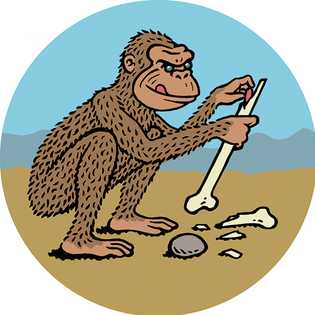 loading
loading
FindingsBone deepDid eating marrow help make us human?  Gregory NemecView full imageHumans are the only primate species that consumes the meat of animals larger than themselves. How did that happen? We probably didn’t start with big-game hunting, says Jessica Thompson, an assistant professor in anthropology. Instead, several million years ago, our ancestors might have been smashing open the bones of other predators’ abandoned kills, looking for the energy-rich bone marrow. Marrow, she proposes, may have helped provide the calories that fueled the evolution of the modern human brain. Bones are relatively easy to exploit; they’re portable, and the marrow inside stays fresh longer than meat does. To get at it, you need only a simple stone or bone to do the bashing. And it offers more energy than meat protein. Marrow might have been the gateway food; complex, dangerous hunts and flaked-stone tools would have come along much later. Possible evidence lies near the 3.2-million-year-old Lucy fossil. Discovered in Ethiopia in 1974, the famed australopiths likely gave rise to the genus Homo. And animal bones with what resemble smash marks—traces of “percussive behavior,” says Thompson—have been found not far from Lucy’s site. Many modern humans do likewise, she adds: “Hunter-gatherers will always break open bones if they have the opportunity.” (She has published her ideas in Current Anthropology.) If australopithecine apes routinely ate bone marrow, that could explain at least one feature of their anatomy—and ours. “Human brains are really expensive to run, so at some point in our past, there had to be a fundamental change in diet to be able to access more calories for less effort,” Thompson explains. This fall or next, she and her team plan to revisit prehuman fossil beds in East Africa, looking for direct evidence. It won’t be easy, she admits: “What we’re trying to do is document behavior, rather than just actually find their fossils, and that’s a much harder thing to do.”
The comment period has expired.
|
|